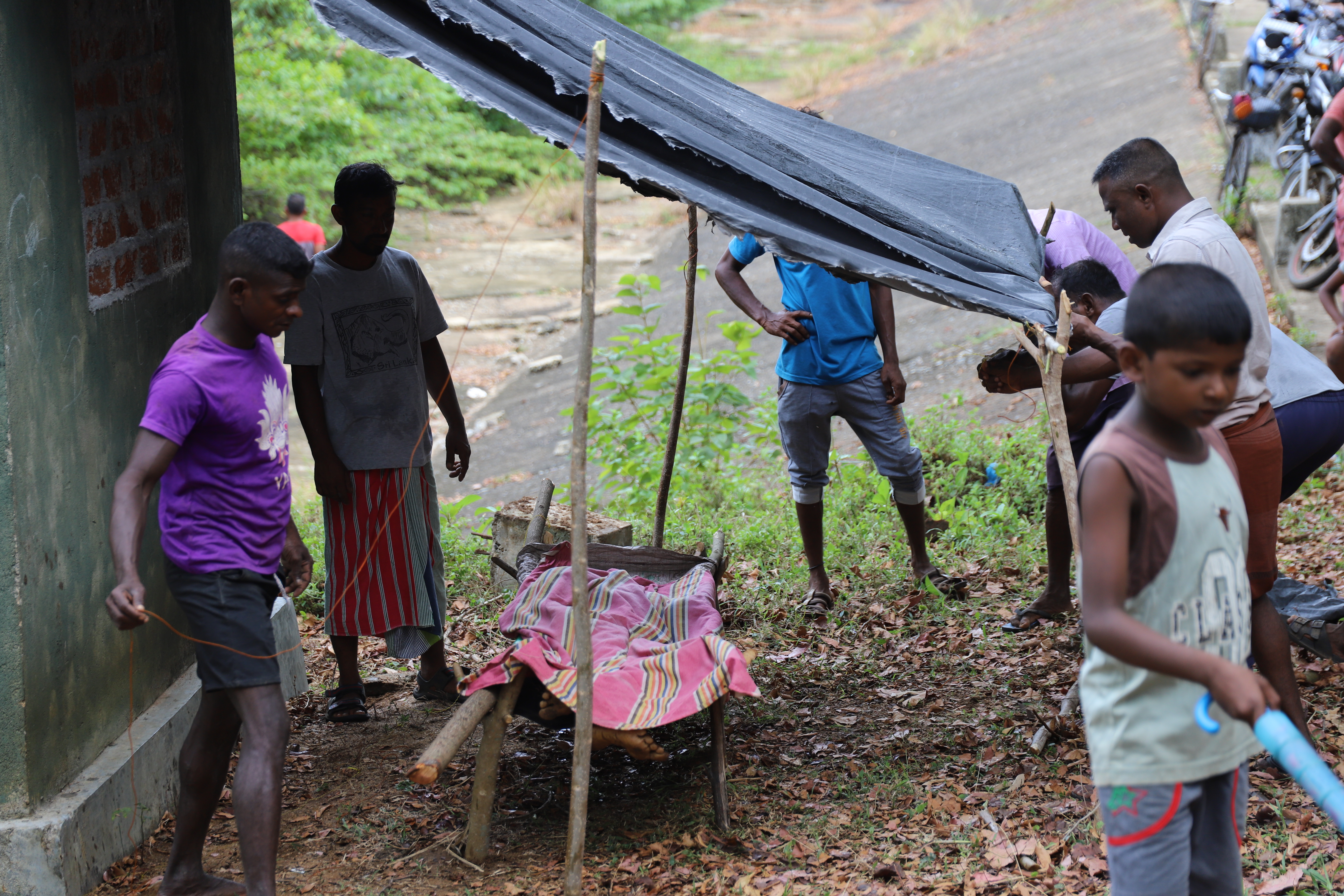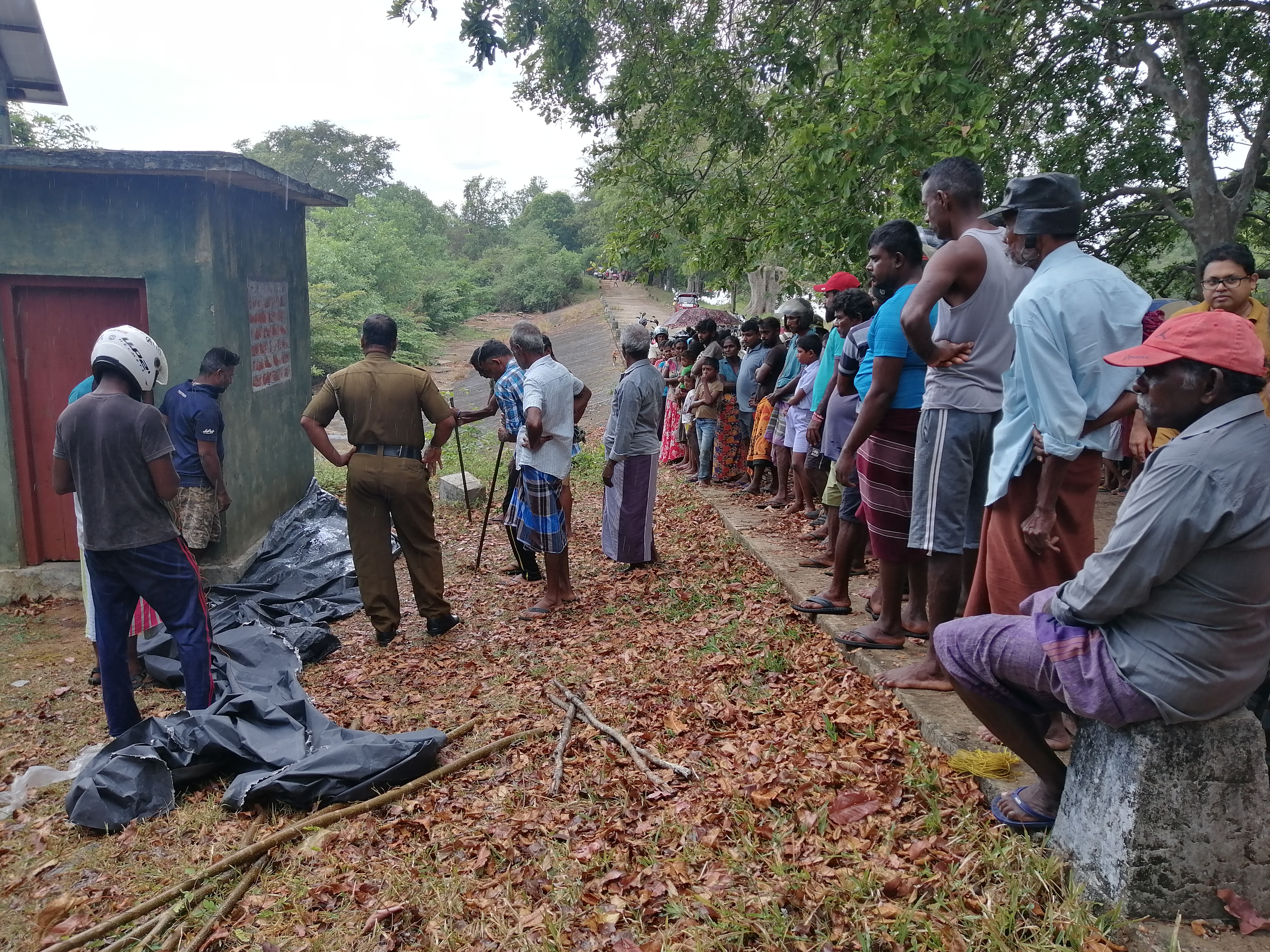Whose and for whom are the environmental and conservation laws?
It is not a new lesson for us to learn that the environmental conservationist practices that are followed bypassing the people are violating the very objectives of conservation. We have experienced too many occasions where such practices have had extremely devastating consequences for humans as well as all the plants and animals living in our ecosystem. However, unfortunately, the opportunistic politicians and the short-sighted bureaucratic regime are repeatedly creating such situations for us making it clear again and again that there is no feeling for humans and wild animals in their vision. A sad example for this is currently unfolding in the ecosystem related to the village of Rotawewa and its environs in the Polonnaruwa District. This is a revelation about this situation.
Rotawewa Village

The ancient village of Rotawewa belongs to the Rotawewa Grama Niladhari Division of the Hingurakgoda Divisional Secretary's Division of the Polonnaruwa District. According to historical information and legends, it can be assumed that Rotawewa had existed as one of the small villages that remained scattered in the area after the collapse of the ancient Rajarata civilization. By about year 1900, while the entire population of Thamankaduwa (present-day Polonnaruwa) was slightly above 5,000, Rotawewa had existed as a village with a significant number of families. The people living in the village of Rotawewa believe that their community is comprised of a mixture of families, i.e. families that had existed from the ancient times and families that migrated after the rebellion of 1818, etc. According to anthropologists such as Seligman who visited this village in the first decade of 1900, there were several families that can be identified as village Veddas and many other families. However, all such evidence shows that, unlike many other villages in the Polonnaruwa district, the history of Rotawewa was not created under the Govi Janapada (farmers colonies) Project that was commenced in the 1930s, but had existed for a long time before that.
The turning point in public life
Historically, the livelihood of the people of Rotawewa was linked with chena cultivation and paddy farming as well as with forest-related activities such as hunting and collecting honey. As the dam of the Kavudulla Reservoir was raised with the development of the farmer colonies, a significant extent of the paddy fields in which the Rotawewa people used to cultivate paddy came under the area of the tank, and thereafter, farming was possible on those fields only in one season of the year when the water level in the tank decreased. However, Rotawewa people managed to continue their livelihood activities including hunting in the surrounding forests as well as chena cultivations for many more decades without any disturbance. It was when the forests on both sides of the village were declared as national parks that this situation changed. With the declaration of the Minneriya National Park in 1997 and Kavudulla National Park in 2002, Rotawewa became a village that is located in the middle of an ecosystem that is legally recognized by the state as nationally important. At present, the elephant access between Minneriya and Kavudulla, too, is located related to this village. As of today, a significant part of the Rotawewa Grama Niladhari Division, which is 5.9 Sq. Km in extent, belongs to these National Parks (mainly to the Minneriya National Park). Accordingly, the long-term forest-related livelihood activities of the Rotawewa people, such as hunting and collecting honey, came to an end. In this context, the people had to use every inch of land left in the village for chena cultivation due to the limitation of paddy lands in the village and due to water supply problems. The water in the small reservoirs in the village (Rotawewa, Matalah Wewa and Kadurugaswewa) was inadequate for paddy farming. Although some of the people in the village continued to illegally engage in activities including hunting in the national parks, due to the punishment imposed by the law as well as the influence from within their own community, they have started shifting to a process of making agriculture their main livelihood by taking to chena cultivation and the limited paddy farming.
The present crisis
In a context such as this, what the government should have done was to support the people in their farming activities, to give formal permits for their lands and to facilitate irrigation for their cultivations. On the other hand, avenues should be opened for the villagers to reap the benefits of the tourism industry that has emerged in connection with the Kavudulla and Minneriya National Parks, which are adjacent to their village, the people should be discouraged from engaging in illegal activities such as hunting, and confidence should be built in the villagers that they can get more benefits by protecting the environment and wildlife.
But what is happening at the moment is the opposite of what should happen. Action is being taken at present to create two reserves (the proposed Rotawewa Reserve and the Kadurugaswewa Reserve, which are of 40 and 26 hectares respectively) using two extents of land located in the village inside the electric fence built around the village demarcating the National Park and which were used by the people for cultivating paddy. Accordingly, the villagers will not be able to engage in any farming activities in those lands in the future. Meanwhile, another extent of 35 acres of land, which was used by the villagers for chena cultivations, was used for a teak cultivation project by the Department of Forest Conservation after entering into an agreement with these farmers. But, after the teak trees were removed at the end of the relevant period, the land was given to the Army to run a farm instead of giving the land back to the people.
The result of these actions is that the people who are used to engage in farming have lost the land in the village to engage in their agricultural activities. On the other hand, the population of the village has gradually increased with the passage of time (the current population of the village is close to 2000) and there is no possibility of providing lands in the village to the increasing population. As the village is located between two national parks, there is no possibility of expanding the village and there is no possibility of creating even a single new land as the existing lands in the village have been made reserves and have been given to external parties.
A villager who commented on the land crisis in the village said,
“In 1990, my father received a 2½ acre land permit from the government. He has five children. By now, I and my brothers and sisters are peacefully using ½ acre each. But as it is less than the minimum division, we cannot make separate land permits for these lands. Although we are using these lands peacefully now, I wonder how our next generation will do this? On the other hand, how can my ½ acre land be further divided? I cannot make a proper living with this ½ acre land. I just grow some food family use. So how can we live? This is the story of every person in this village".
In this backdrop, Hingurakgoda Pradeshiya Sabha is running a garbage yard in a part of the land that has been proposed to be declared as Karuwalagaswewa Reserve. It is being operated violating all environmental laws of this country. According to the law of this country, it is not allowed to run a garbage yard like this within a distance of one mile from the boundary of a national park, but the distance between this place and the boundary of the park is less than 200 meters. Apart from that, this garbage yard is located close to one of the main canals that carry water to the Kavudulla tank, which is a water source that supplies drinking water to more than 50,000 people. During the rainy season, the land where the garbage yard is located gets inundated and this water flows directly through the canal to the Kavudulla tank. The waste in this garbage yard contains not only organic and non-biodegradable polythene and plastic, but also clinical waste. This landfill is operated without obtaining any environmental protection licence. Not only that, elephants break the electric fence that has been built between the park and the village and come from the Minneriya National Park every day to eat the garbage in this garbage yard, and consequently, a severe human-elephant conflict has been created in the village. On the other hand, the lives of elephants who eat this garbage are in great danger, too.


Where to from here?
On the one hand, the government institutes that are oppressing the people by following a strict conservationist approach by converting into reserves even the lands in the village, which is located between two reserves and which cannot be further expanded, has allowed an extremely illegal and environmentally harmful activity that affects man animals to be carried out in the land belonging to that institute. The people of Rotawewa are questioning as to whom this conservation is for. People are deprived of land. But even the wild animals do not have a suitable environment for them. What should the people of Rotawewa, who do not have the land they need for agriculture, which is their mainstay, do now?
“We are people who lived with the forest, but after the national parks came, we respected those laws and gradually got used to a different life style. There is no for us way to lead that lifestyle now. When people cannot survive, they would do anything. What would happen if people started going hunting more and more often disregarding whether they will be sent to jail? It is already happening. Collecting honey from the forest, which people used to do once a year, is being done three times now. If this continues, the larvae will be destroyed widely. But what else can these people, who have no other way to live, do? It is because of the very decisions of the government that we are being pushed into the forest again".
Such was the opinion of a farmer leader who commented on the emerging crisis.
People of Rotawewa are questioning, "Are conservation laws only for us?". The Rotawewa incident shows us time and again that an environmental protection that ignores people does more harm than good. It is humans and wild animals that pay the price in these stupid processes with their lives and the lives of their future generations, that are totally disregarded as having no importance. The insensitivity of the majority of the people of this country towards these issues is frightening.
Recently the Army released a land in which they were running a farm, and the villagers now fear that the 35-acre land will be given to an investor outside the village. There have been many such attempts in the past as well.
The People’s Alliance for Right to Land (PARL)





